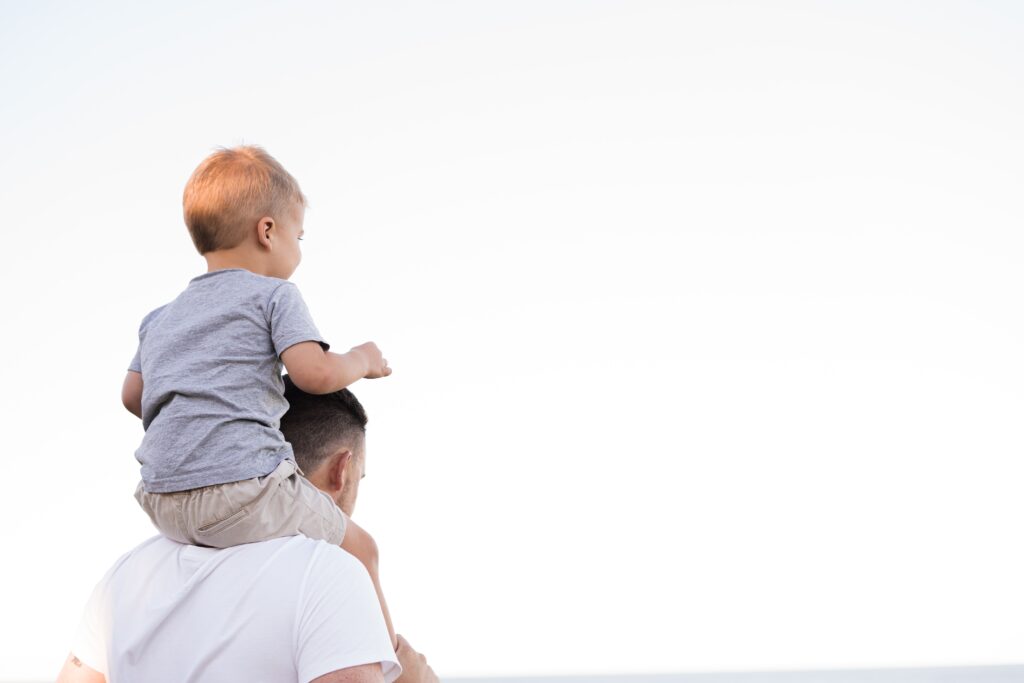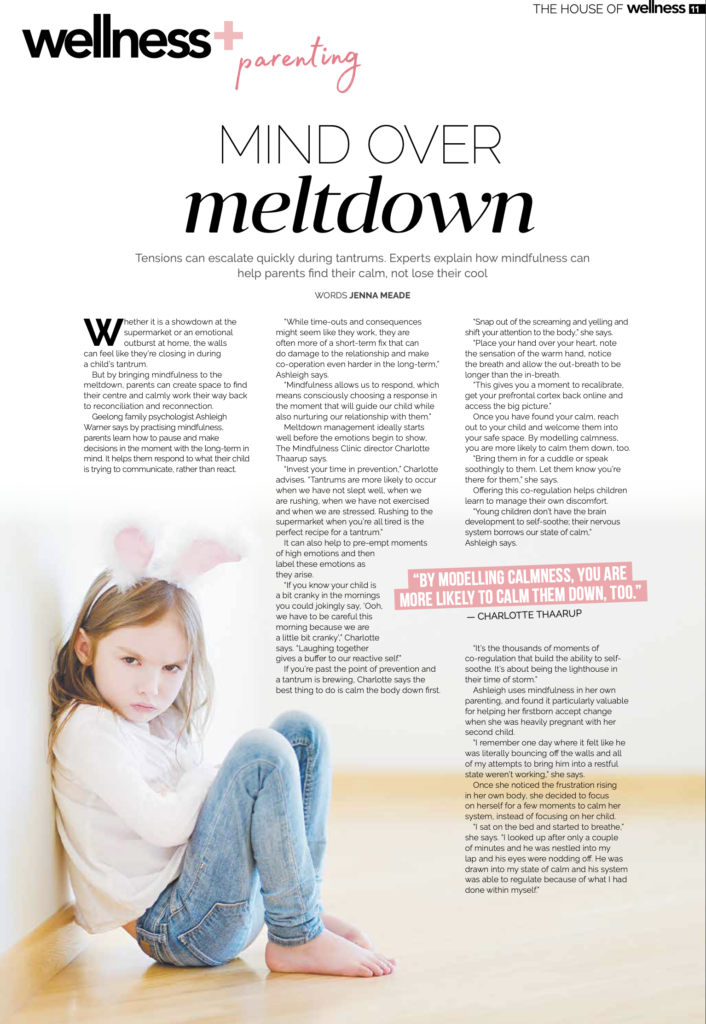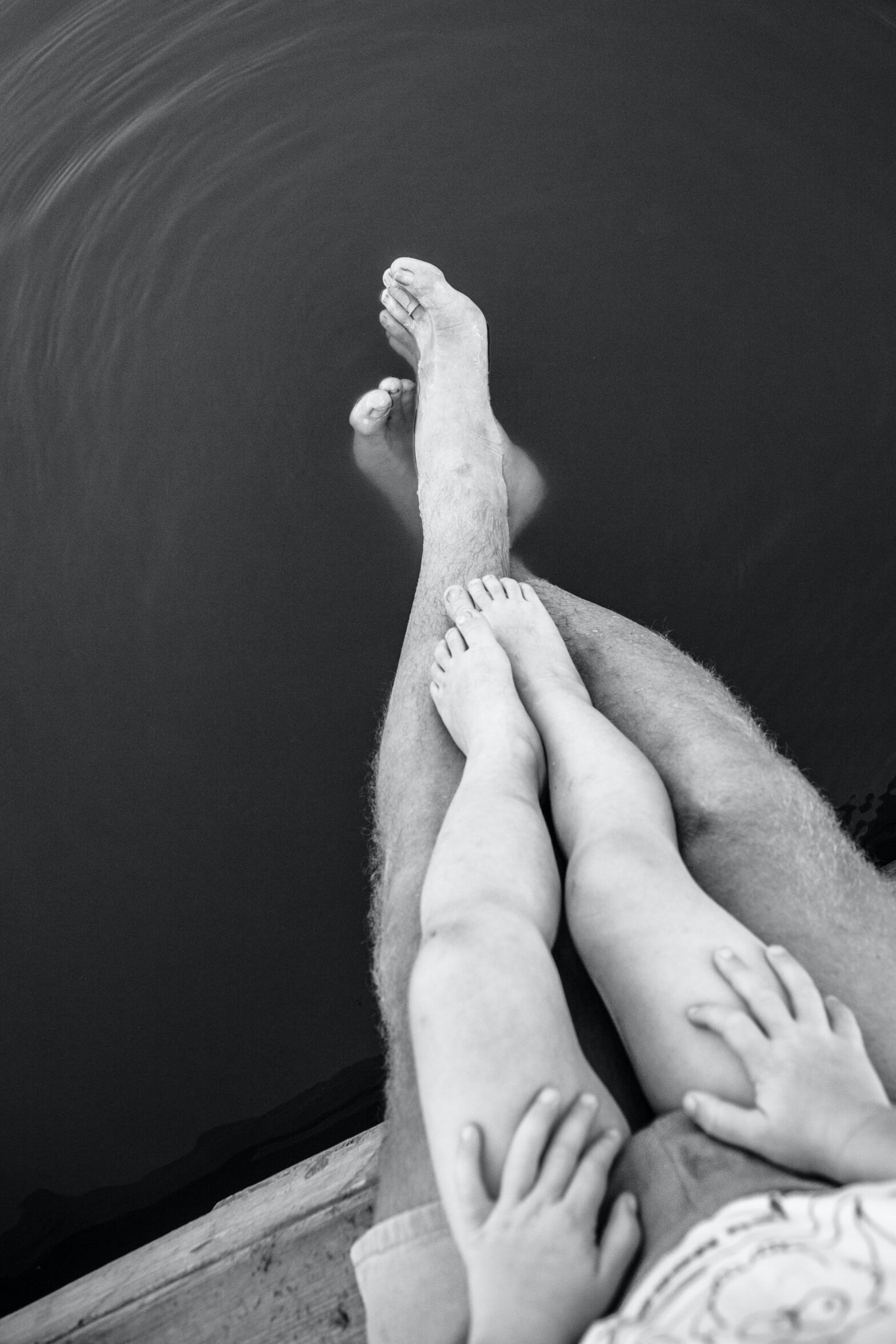Tensions can escalate quickly during tantrums. Experts explain how mindfulness can help parents find their calm, not lose their cool.
Whether it is a showdown at the supermarket or an emotional outburst at home, the walls can feel like they’re closing in during a child’s tantrum.
But by bringing mindfulness to the meltdown, parents can create space to find their centre and calmly work their way back to reconciliation and reconnection.

Geelong family psychologist Ashleigh Warner says by practising mindfulness, parents learn how to pause and make decisions in the moment with the long-term in mind. It helps them respond to what their child is trying to communicate, rather than react.
“While time-outs and consequences might seem like they work, they are often more of a short-term fix that can do damage to the relationship and make co-operation even harder in the long-term,” Ashleigh says.
“Mindfulness allows us to respond, which means consciously choosing a response in the moment that will guide our child while also nurturing our relationship with them.”
Meltdown management ideally starts well before the emotions begin to show, The Mindfulness Clinic director Charlotte Thaarup says.

“Invest your time in prevention,” Charlotte advises. “Tantrums are more likely to occur when we have not slept well, when we are rushing, when we have not exercised and when we are stressed. Rushing to the supermarket when you’re all tired is the perfect recipe for a tantrum.”
It can also help to pre-empt moments of high emotions and then label these emotions as they arise.
“If you know your child is a bit cranky in the mornings you could jokingly say, ‘Ooh, we have to be careful this morning because we are a little bit cranky’,” Charlotte says. “Laughing together gives a buffer to our reactive self.”
If you’re past the point of prevention and a tantrum is brewing, Charlotte says the best thing to do is calm the body down first.
“Snap out of the screaming and yelling and shift your attention to the body,” she says. “Place your hand over your heart, note the sensation of the warm hand, notice the breath and allow the out-breath to be longer than the in-breath.
“This gives you a moment to recalibrate, get your prefrontal cortex back online and access the big picture.”
Once you have found your calm, reach out to your child and welcome them into your safe space. By modelling calmness, you are more likely to calm them down, too.
“Bring them in for a cuddle or speak soothingly to them. Let them know you’re there for them,” she says.

Offering this co-regulation helps children learn to manage their own discomfort.
“Young children don’t have the brain development to self-soothe; their nervous system borrows our state of calm,” Ashleigh says. “It’s the thousands of moments of co-regulation that build the ability to self- soothe. It’s about being the lighthouse in their time of storm.”
Ashleigh uses mindfulness in her own parenting, and found it particularly valuable for helping her firstborn accept change when she was heavily pregnant with her second child.
“I remember one day where it felt like he was literally bouncing off the walls and all of my attempts to bring him into a restful state weren’t working,” she says.
Once she noticed the frustration rising in her own body, she decided to focus on herself for a few moments to calm her system, instead of focusing on her child.
“I sat on the bed and started to breathe,” she says. “I looked up after only a couple of minutes and he was nestled into my lap and his eyes were nodding off. He was drawn into my state of calm and his system was able to regulate because of what I had done within myself.”

